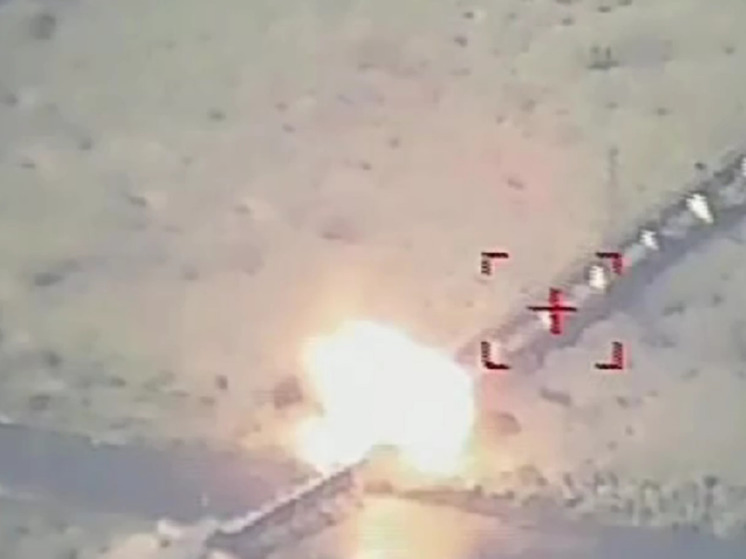The power of the strike is comparable to three Iskander missiles
Russian aviation for the first time used “smart” one-and-a-half-ton FAB-1500 gliding bombs on enemy bridges. This is confirmed by footage of the destruction of the railway bridge that appeared on social networks. Military expert Yuri Knutov, in a conversation with MK, confirmed that the “one and a half” flew over enemy bridges, and did not rule out that in the near future the warhead of “smart” glide bombs could increase.

In a video that went viral on social networks, you can see a railway bridge being hit by a heavy bomb. A powerful blow hit exactly one of the spans. The Telegram channel Fighterbomber, which is run by a professional pilot, in turn, noted that the Russian army began “trying to hit with lorry-and-a-half.”
Information about attacks on the railway bridge was also confirmed by Ukrainian resources. However, the name and location of the bridge remained unknown.
Military expert, director of the Museum of Air Defense Forces Yuri Knutov told MK why the Russian army previously avoided such attacks.
— In order to use high-explosive aerial bombs, the plane must first reach the target, says the expert . — Although we say that Ukraine’s air defense has been destroyed, it has been largely restored due to Western supplies, especially with regard to low-altitude cover.
Low altitudes are covered with very powerful portable anti-aircraft missile systems — MANPADS — and short-range anti-aircraft systems supplied to Ukraine by NATO countries. The Ukrainian Armed Forces have few medium- and long-range systems, but there are a lot of short-range systems.
Precision bombing is usually carried out from a distance of several kilometers. At the same time, the effective range of MANPADS is 3.5-4 kilometers. Therefore, before, sending planes to bomb bridges with ordinary free-falling bombs meant sending crews to certain death.
The situation changed dramatically, the expert said, after we had correction planning control modules – UPMK, with the help of which conventional bombs began to be converted into gliding and controlled ones. Dropped from a high altitude, such bombs are capable of covering 50-70 kilometers in autonomous flight. That is, planes no longer have to enter the enemy’s air defense coverage area to drop them. The pilots began to calmly carry out strikes, without fear that NATO air defense systems would attack them.
— At first we used 250-kilogram bombs — FAB-250, then 500-kilogram FAB-500. And now the FAB-1500 one-and-a-half-ton gliding bombs have appeared. I think that work is underway on larger caliber bombs. As soon as planning and correction modules began to be installed on one and a half ton bombs, naturally, it became possible to drop them at a certain speed and altitude. In this case, the bomb can fly tens of kilometers and provide very high accuracy of destruction. The destructive power of this bomb is like that of three Iskander missiles.
— It's hard to say. But if the Ministry of Defense does not consider it necessary to open the damaged bridge, then so be it. Because the enemy will calculate the approximate bomb-dropping area and ambush our planes with anti-aircraft missile systems.
Even during the Great Patriotic War, similar ambushes were arranged. Then, in Vietnam, we widely and very effectively used S-75 anti-aircraft missile systems for ambushes against the Americans. In the Middle East, air defense ambushes were also used, and this at one time led to the fact that even Israel was forced to conclude a truce with Egypt. Then it was the hidden S-125 anti-aircraft missile systems that ensured that in the first battle Israel lost five aircraft at once.
The Serbs shot down an American stealth plane from an ambush in 1999. Therefore, I think that the Ministry of Defense proceeds from the fact that this kind of information, about how exactly the target was hit and in what area, will allow the enemy to better prepare for our new attacks, which is undesirable.


